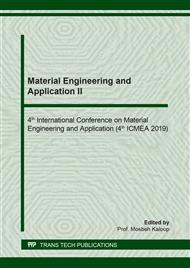p.209
p.214
p.220
p.225
p.232
p.238
p.243
p.248
p.254
Simulation of Gap Flow Field in EDM Process Uesd Oil-in-Water Working Fluid
Abstract:
Electric Discharge Machining (EDM) working fluid as a medium can control electrical discharges occur, carry away the heat, compress discharge channel and help remove the corrosion products out of the gap. The main working fluids used in EDM are oil-based working fluid, gas-based working fluid, powder mixed working fluid, gas mixed working fluid and water-based working fluid. In order to improve the green and safety of EDM working fluid, an oil-in-water working fluid is proposed. A gap flow field model of EDM is established by using external flushing fluid. The flow field distribution, pressure distribution and corrosion products distribution of the machining gap are analyzed by using computational fluid dynamics. The effects of inlet pressure, processing depth and electrode size on the flow field are studied. The simulated results show that within a certain range, removal effect of the corrosion products will increase with inlet velocity and the size of electrode and decrease with processing depth.
Info:
Periodical:
Pages:
232-237
Citation:
Online since:
May 2020
Authors:
Price:
Сopyright:
© 2020 Trans Tech Publications Ltd. All Rights Reserved
Share:
Citation:


